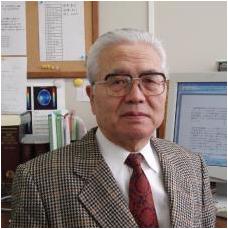Theme: Diagnosis Approaches of Dementia and Alzheimers Disease
Renowned Speakers
Dementia 2015
It is our pleasure to welcome you to the Dementia Conferences 2015 during August 31 - September 02, 2015 Toronto, Canada. The conference will be organized around the theme of “Diagnosis Approaches of Dementia and Alzheimer’s Disease”.
Dementia, including Alzheimer’s disease, is one of the biggest global public health challenges facing our generation. Worldwide, at least 44 million people are living with dementia this number is expected to double by 2030 and more than triple by 2050 to 115 million. In 2011, an estimated 747,000 Canadians were living with Alzheimer’s or other dementias by 2031, it is estimated that 1.4 million Canadians will have dementia. In Canada 72% of Alzheimer's sufferers are women and 62% of dementia cases are also women. Much of the increase will be in developing countries like Western Europe and North America. Already 62% of people with dementia live in developing countries. Today, over 35 million people worldwide currently live with the condition. This number is expected to double by 2030 and more than triple by 2050 to 115 million. No treatments available to slow or stop the brain damage caused by Alzheimer’s disease, several medications can temporarily help improve the symptoms of dementia for some people. In two decades, it is estimated that 1.4 million Canadians will have dementia, costing the economy almost $300 billion per year. Globally, dementia cost $600 billion a year.
Vascular dementia is widely considered the second most common cause of dementia after Alzheimer's disease, accounting for 10 percent of cases. Many experts believe that vascular dementia remains underdiagnosed like Alzheimer's disease even though it's recognized as common.
Vascular dementia conference 2015 provides more updates about Alzheimer’s and dementia care and research.
Toronto is Canada's largest city, the fourth largest in North America, and home to a diverse population of about 2.8 million people. For conducting international dementia conference Toronto is the best option and it is a global center for business, finance, arts and culture and is consistently ranked one of the world's most livable cities. The Greater Toronto Area (GTA) is a modern multicultural urban center with something for everyone. Year round, the GTA offers a unique mix of historical attractions, seasonal celebrations, family fun and a safe, walkable downtown core.
OMICS Group is a pioneer and leading scientific event organizer, hosts over 350 leading-edge peer reviewed Open Access Journals and organizes over 100 International scientific conferences all over the globe annually with the support from over 100 International societies all around the world, with the support of 30000 editorial board members and 3 million viewers we are moving ahead to achieve our goal. OMICS Group International conferences are integrated with International workshops, symposia, trade shows in all the areas of Science, Medicine and Technology. For more...
Highlights of the Conference:
Track 1: Causes and Prevention of Alzheimer’s
Alzheimer's is caused by brain cell death. It is a neurological disorder in which the death of brain cells causes memory loss and cognitive decline. The size of the brain shrinks in Alzheimer's, nerve cells and connections in the tissue progressively reduced, which cannot be seen or tested in the living brain affected by Alzheimer's disease, post-mortem/autopsy will always show tiny inclusions in the nerve tissues, called as plaques and tangles. Plaques are found between the dying cells in the brain - from the build-up of a protein called beta-amyloid (amyloid plaques). The tangles exist in the brain neurons, from a disintegration of second protein, called tau.
Worldwide, with Dementia or Related disorders nearly 44 million people have suffered in 2015,past results shown 35.66 million population lived with dementia worldwide in year 2010, with numbers expected to nearly double each twenty years, to 65.7 million in 2030 and 115.4 million in 2050. In 2010, fifty eight per cent of all population with dementia lived in countries with lower or moderate incomes, with this proportion anticipated to rise to 63% till 2030 and 71% by 2050. This condition is anticipated to double by 2030 and quite triple by 2050 to 115 million.
In this track we can discuss on Neurological changes in brain, Epidemiology and prevalence, Amyloid protein, Genetic associations and susceptibility genes, Role of Apolipoprotein E, Brain trauma, Metabolic syndrome and Alzheimer’s disease, Protein misfolding, aggregation and toxicity, Disease-causing mutations, Histone modification, DNA methylation, Alzheimer’s disease prevention.
Track 2: Managing Dementia
Dementia is the term used to describe the symptoms of a number of conditions that affecting the brain. The commonly seen condition is Alzheimer’s, and other includes Parkinson's disease. Symptoms seen at early stages are personality changes, withdrawal, memory loss, confusion and apathy. Early diagnosis helps with providing early treatment, support and planning. Medications might help with some symptoms of dementia, but no permanent cure.
Majority of people with dementia are above age 65, the condition is not normal for all older people. The occurrence of dementia gets high with age, but it’s not given that an older person will develop it. While only 1-in-4 people with Alzheimer’s disease or Dementia has been diagnosed.
Vascular dementia is the second most common cause of dementia in older people. Because it has a lower profile than Alzheimer's, many people don't suspect vascular dementia when forgetfulness becomes problematic. It's also difficult to diagnose so it's difficult to know exactly how many people suffer from vascular dementia. Current estimates attribute 15% to 20% of dementia cases in older adults to vascular dementia. Vascular dementia occurs when vessels that supply blood to the brain become blocked or narrowed. Strokes take place when the supply of blood carrying oxygen to the brain is suddenly cut off. However, not all people with stroke will develop vascular dementia.
Vascular dementia can occur over time as "silent" strokes pile up. Quite often, vascular dementia draws attention to itself only when the impact of so many strokes adds up to significant disability. Avoiding and controlling risk factors such as diabetes, high blood pressure, smoking, and high cholesterol can help curb the risk of vascular dementia.
Few more things we need to know about vascular dementia, Dementia with lewy bodies, Fronto-temporal dementia, Rarer causes of dementia, Creutzfeldt-Jakob disease, HIV-related cognitive impairment, Mild cognitive impairment.
Track 3: Alzheimer’s disease Diagnosis and Symptoms
Alzheimer’s disease is that the commonest type of dementia, it is a serious brain disorder and it impacts daily living through memory loss and cognitive changes. Although not all memory loss indicates Alzheimer’s disease, one in ten people over 65 years of age, and over half of those over 85 have Alzheimer’s disease. Currently, 26 million people worldwide have this dementia, and over 15 million Americans will be affected by the year 2050.
There is no single test that can show whether a person has Alzheimer's. While physicians can almost always determine if a person has dementia, it may be difficult to determine the exact cause. Diagnosing Alzheimer's requires careful medical evaluation, including medical history, mental status testing, physical and neurological exam, blood tests and brain imaging.
Symptoms of Alzheimer’s disease usually develop slowly and gradually worsen over time, progressing from mild forgetfulness to widespread brain impairment. Chemical and structural changes in the brain slowly destroy the ability to create, remember, learn, reason, and relate to others. As critical cells die, drastic personality loss occurs and body systems fail.
This session includes Biomarkers, Novel approaches in biomarkers, Living with Alzheimer’s disease, Patients psychological changes, Neuropathology and Neuropsychology, Early detection possibilities, Different diagnosis procedures, New methods in diagnosis, Normal brain aging.
Track 4: Alzheimer’s disease Imaging
Scientists look at the brain’s grey matter when investigating about Alzheimer’s disease. A fresh study, found that degenerating white matter in the brain could be an early indicator of disease. A study was published in Radiology which concludes that white matter plays an important role in how the disease strikes and progresses. Abnormal deposits of proteins that form amyloid plaques and tau tangles all over the brain in Alzheimer’s disease. It can also be characterized by shrinkage of brain tissues due to neurons loss.
This session includes Amyloid and Tau imaging, Imaging animal models, Imaging and genetics, New methods in imaging, Structural and functional MRI, Positron emission tomography, MR spectroscopy, EEG and brain mapping, SPECT imaging, Imaging correlates of clinical, cognitive and biomarker variables.
Track 5: Alzheimer’s disease Pathophysiology and Disease Mechanisms
Alzheimer’s disease (AD) is a progressive dementia with loss of neurons and the presence of two main microscopic neuropathological hallmarks: extracellular amyloid plaques and intracellular neurofibrillary tangles. Early onset AD, a rare familial form, is caused due to mutation of one out of three genes: (amyloid precursor protein), (presenilin 2) or (presenilin 1). Sporadic form occurs usually after age of 65 and accounts for most cases; it most likely results from a combination of genetic and influence of enviornment. Confirmed risk factors for sporadic AD are age and the presence of the E4 allele of (Apo lipoprotein E). Amyloid plaques comprise mainly of the neurotoxic peptide amyloid (Aβ, Abeta), cleaved sequentially from a larger precursor protein (APP) by two enzymes: β-secretase (also called BACE1) and γ-secretase (comprising four proteins, presenilin is one of them). If APP is first cleaved by the enzyme α-secretase rather than β-secretase then Aβ is not formed. Neurofibrillary tangles comprise mainly of the protein tau which binds with microtubules, which facilitating the neuronal transport system. Tau uncoupling from microtubules and aggregation into tangles inhibits transport and results in disassembly of microtubule. Phosphorylation of tau might have an important role in this. Selective vulnerability of neuronal systems such as the cholinergic, serotonergic, and noradrenergic and glutamatergic systems form the basis of current rational pharmacological treatment.
This session includes Aging, Prions and Alzheimer’s disease, Cellular signalling and cell to cell transmission, Oxidative damage and mitochondrial dysfunction, Autoimmunity in Alzheimer’s disease, Blood-brain barrier and transport, Neurogenesis and stem cells and Cell death.
Track 6: Amyloid Protein in Alzheimer’s and Dementia
The amyloid plaques and neurofibrillary tangles formation are thought to contribute to the degradation of the neurons (nerve cells) in the brain and the subsequent symptoms of Alzheimer's disease.
Amyloid Plaques: One of the hallmarks of Alzheimer's disease is the accumulation of amyloid plaques between nerve cells (neurons) in brain. Amyloid generally indicates protein fragments that the body produces normally. Beta amyloid is a protein fragment from an amyloid precursor protein (APP). In a healthy brain, these protein fragments are broke down and get eliminated. In Alzheimer’s, the fragments gets accumulated to form hard &insoluble plaques.
Neurofibrillary Tangles: Neurofibrillary tangles are insoluble twisted fibers found inside the brain's cells, consisting primarily of a protein called tau, which forms structure called a microtubule. Transport of nutrients and other important substances from one part of the nerve cell to another done by help of microtubule. In Alzheimer's disease, the tau protein is abnormal and results in collapse of the microtubule structures.
This session includes Amyloid Protein and Alzheimer’s Disease, Amyloid beta metabolism in Alzheimer’s, Brain accumulation of toxic amyloid beta, Amyloid Plaques and Neurofibrillary Tangles, Amyloid neuroimaging and biomarkers, Amyloidosis and Neurodegeneration, The amyloid hypothesis and potential treatments, Amyloid beta deposition, cognition and brain volume.
Track 7: Geriatrics and Cognitive Disorder
Geriatrics or geriatric medication may be a specialty that focuses on health care of older people. It aims to push health by preventing and treating diseases and disabilities in older adults. there's no set age at that patients is also underneath the care of a specialist or geriatric MD, a MD United Nations agency makes a speciality of the care of older people. Rather, this call is set by the individual patient’s needs, and therefore the availableness of a specialist. It’s vital to notice the distinction between gerontology, the care of aged people, and geriatrics, that is that the study of the aging method itself.
Cognitive disorders square measure a class of mental state disorders that primarily have an effect on learning, memory, perception, and drawback determination, and embody blackout, dementia, and delirium. Whereas anxiety disorders, mood disorders, and psychotic disorders can even have an effect on psychological feature and memory functions, the DSM-IV-TR doesn't contemplate these psychological feature disorders, because loss of cognitive function is not the primary (causal) symptom. Causes vary between the various sorts of disorders however most include damage to the memory parts of the brain. Treatments rely on however the disorder is caused. Medication and therapies square measure the foremost common treatments but, for a few sorts of disorders like amnesia, treatments will suppress the symptoms however there is presently no cure.
This session includes Neurodegenerative diseases, Geriatric emergency medicine, Geriatric diagnostics, Geriatric neurology, Geriatric oncology, Geriatric psychiatry or psychogeriatric, Geriatric pharmacotherapy, Alcohol addiction and mental health, Nutritional deficiency, Preventions: Mental activity and healthy lifestyle.
Track 8: Care Practice and Awareness
Persons with dementia have multiple psychological feature deficits that include each memory impairment, that affects the flexibility to find out new info or recall information previously learned, and one or additional of the subsequent symptoms-aphasia, apraxia, agnosia, or executive dysfunction-such that the psychological feature deficits negatively have an effect on social or activity functioning with a big decline in previous talents. Additionally, persons with dementia typically suffer from comorbid conditions that additional complicate care and impede best outcomes. Therefore, developing caregiving methods people with dementia is urgent, given this increasing prevalence and therefore the associated burden that dementia places not only on the individuals, however on the caregivers, relations, and therefore the resources of the health care system. Conventional views bearing on geriatric nursing typically paint an image of the care as being slow paced certain and less demanding than acute care. However, care of the aged, and particularly those with dementia, is usually complicated, unpredictable, and unstable.
This session includes Education and training of medical professionals, Care and quality of life, Person centered care, Cognitive training, Support and training for informal and professional careers, Putting scientific knowledge into practice, Non-pharmacological Interventions, Functional foods, Art, music and life style.
Track 9: Therapeutic Targets and Mechanisms for Treatment
Alzheimer's disease is a progressive neurodegenerative disease that is characterized histopathologically by the presence of plaques, mainly composed of Abeta amyloid and the tangles, mainly composed of hyperphosphorylated tau. To date, there is no treatment that can reverse the disease, and all the current therapeutics is directed to cope with the symptoms of the disease. Here we describe the efforts dedicated to attack the plaques and, in more detail, the process of neurofibrillary degeneration, linked to the presence of the hyperphosphorylated microtubule associated protein tau. We have identified the different putative targets for therapeutics and the current knowledge on them.
Treatment for Alzheimer's disease is entering a new and exciting phase, with several new drugs beginning clinical trials. Many of these new therapies are based on our best current understanding of the pathogenesis of Alzheimer's disease, and are designed to try to either slow or halt the progression of the disease. There are several different theories underlying the current efforts, and these are briefly reviewed. Therapies directed against some aspect of beta-amyloid formation, against neurofibrillary tangle formation and against the inflammatory response are all considered, as are the problems associated with each area. It is as yet unclear which, if any, of these approaches will be successful, but the high level of activity in each of these three fields provides some hope that an effective treatment for Alzheimer's disease is on the horizon.
This session includes Abeta, truncated and pGlu-Abeta, Immunotherapy, Neurotransmitter-based targets, Anti-inflammatory targets, Anti-oxidants, Neurotrophic factors, Protein aggregation, Deep brain stimulation, Misfolding and chaperones, Gene therapy, Nanotechnology, Drug-delivery systems.
Track 10: Animal Models and Translational Medicine
Animal models for Alzheimer’s disease it is important to think about the human phenotype and what is being modeled in terms of the animal phenotype. The moderator, Bradley Hyman, professor of neurology at Harvard Medical School, said that animal models of Alzheimer’s disease, based on the genetics of the disease and the closely related frontotemporal dementia, replicate at least some of the pathology. Researchers have been successful at modeling very specific aspects of Alzheimer’s disease in the mouse (e.g., plaques, tangles). Although these are incomplete models of the human disease, they have been well received in the field as potentially relevant models for use in drug discovery.
Patients with Alzheimer’s disease will display both amyloidopathy and tauopathy; however, scientists often focus, in a reductionist way, on one or the other in an animal model. A participant added that even though the anatomy in the mouse is different than the human, mutant tau mice are relatively good models in that they recapitulate tau-dependent neurodegeneration. This has led a number of companies to focus on antibodies that block tau-dependent neurodegeneration in these mouse models.
This session includes Transgenic models, Pharmacological and lesion models, Natural and seminatural models, Primate models, Zebra fish models, Animal models of human cognitive aging, Development of new animal models, Genetics of translational models, Protein-protein interactions, Ethical issues with animal models.
Conference Highlights
- Causes and Prevention of Alzheimers
- Managing Dementia
- Alzheimers Disease Diagnosis and Symptoms
- Alzheimers Disease Imaging
- Alzheimers Disease Pathophysiology and Disease Mechanisms
- Amyloid Protein in Alzheimers and Dementia
- Geriatrics and Cognitive Disorder
- Care Practice and Awarness
- Therapeutic Targets and Mechanisms for Treatment
- Animal Models and Translational Medicine
To share your views and research, please click here to register for the Conference.
To Collaborate Scientific Professionals around the World
| Conference Date | September 01-02, 2015 | ||
| Sponsors & Exhibitors |
|
||
| Speaker Opportunity Closed | Day 1 | Day 2 | Day 3 |
| Poster Opportunity Closed | Click Here to View | ||
Useful Links
Special Issues
All accepted abstracts will be published in respective Our International Journals.
- Journal of Alzheimers Disease & Parkinsonism
- Journal of Neurological Disorders
- Brain Disorders & Therapy
Abstracts will be provided with Digital Object Identifier by










